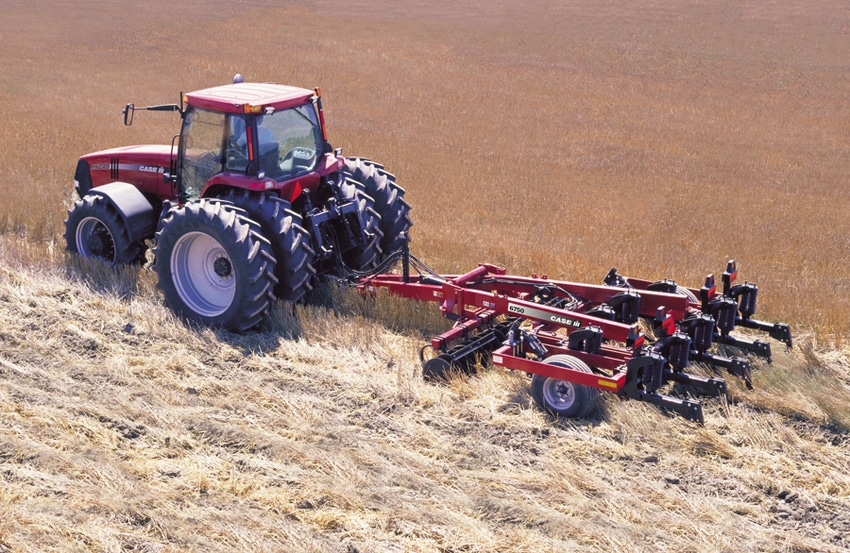July 15, 2011

Tractor operations represent a significant portion of annual on-farm fuel costs.
A new publication from Iowa State University Extension discusses tractor test data to consider when leasing or purchasing a tractor.
“Fuel Efficiency Factors for Tractor Selection” (PM 2089O) is available to download from the Extension Online Store, www.extension.iastate.edu/store.
“During the decision-making process, tractor test data can be used to evaluate drawbar power and to estimate fuel consumption,” said Mark Hanna, ISU Extension agricultural engineer. “For example, before purchasing a larger or heavier tractor, consider that at least seven percent of tractor power is commonly required just to overcome rolling resistance created by the tractor’s weight.”
This publication illustrates the most relevant data that are available to estimate tractor fuel efficiency before purchasing a new tractor.
Test measurements include drawbar load tests, lift capacity, hydraulic power and power and fuel use during power-take-off (PTO) operations.
Tractor test data for tractors manufactured in the United States are available from the Nebraska Tractor Test Laboratory (NTTL) at the University of Nebraska-Lincoln.
“If you’re considering adding new equipment to your fleet before harvest begins, the tractor test data can help you compare newer and older models effectively,” said Dana Petersen, ISU Extension program coordinator with ISU Farm Energy. “Seeking the best tractor to suit your operation can reduce costs by conserving fuel.”
For more tips on energy efficiency around the farmstead, visit http://farmenergy.exnet.iastate.edu or follow @ISU_Farm_Energy on Twitter.
The Farm Energy publications are part of a series of farm energy conservation and efficiency educational materials being developed through the ISU Farm Energy Initiative.
The purpose is to increase farmers’ awareness of opportunities for improving efficient use of farm energy. The initiative also will help farmers and utility providers to explore alternatives to reduce farm energy demand and to improve overall profitability in a rapidly changing energy environment.
You May Also Like




